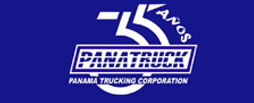Source: FIATA
With the development of modern information technology, global trade has stepped into an e-commerce era. Means and ways of international trade are undergoing profound changes; cross-border paperless trade is becoming the new source of economic growth; digital technology is also reshaping the transaction process of world trade. These changes are also accelerating modernization and digitization of the shipping industry, among which the dematerialization of the bill of lading (BL) – one of the most crucial trade documents – attracts tremendous attention.
Ever since the late 1980s, business practices on the electronic bill of lading (eBL) have sprouted and grown, corresponding business regulations and legislations have also matured gradually. From a global perspective, ports and shipping companies have attempted using electronic means in customs clearance, loading, discharging and storage for decades. The usage of electronic transport documents is also increasing accordingly. Many standard contracts in the shipping industry explicitly permit the usage of electronic transport documents.
Normal eBL vs Blockchain eBL
Compared with the traditional paper version, the eBL has conspicuous advantages in terms of efficiency, safety, price, and speed. According to the differences in their underlying technologies, the eBL can be divided into normal eBL and blockchain eBL. The normal eBL is based on Electronic Data Interchange technology, recording all transfers of title of goods in a centralized title registry. Blockchain eBL employs blockchain technology to regulate the transference of the BL, allowing carrier, consignor, consignee, bank and other participants to complete and supervise the issuing, endorsing and surrendering process of B/L at the same time.
Globally, there are now three normal eBL platforms and four blockchain eBL platforms that have been officially approved by the International Group of P&I Clubs (IG Clubs). It means that IG Clubs agree to underwrite carriers’ transportation liabilities arisen from using these seven platforms.
Using the eBL helps cut operating costs and mitigate the risk of carriers’ delivery of goods without presentation of the original BL. There are also no technical obstacles, especially after the official approval by IG Clubs, risks of using several eBL platforms are insurable, which is a great relief to shipping companies. However, adoption of eBLs continues to lag.
The Rotterdam Rules provides a legal framework to regulate electronic transport record. UNCITRAL Model Law on Electronic Transferable Records 2017 (MLETR) is also a legal model targeting on the transferability of electronic records. However, the Rotterdam Rules have only been ratified by five countries so far and it is largely uncertain whether or when it will enter into force. Also, MLETR itself has no legal force and only Bahrain and Singapore have enacted its contents into their domestic legislations.
Although the eBL is still far from popularization, with the further development of technology and digitization of international trade, the eBL will thrive at a faster pace. At present, the digitization of international trade mainly refers to the digitization of contract formation. The UNCITRAL Model Law on Electronic Commerce, the Model Law on Electronic Signatures, and the United Nations Convention on the Use of Electronic Communications in International Contracts all concentrate on the digitization in the process of exchanging information and reaching consensus. In this initial stage, the dematerialization of the BL is still dealing with basic issues such as setting technical standard, constructing reliable platforms, and converting the paper version into the eBL. With further development, digitization will surely extend from contract formation to contract performance, and even expand to cover the whole trade process, including transportation, payment, delivery, transfer and so on.
The eFBL project
Considering the industry’s trends and needs, FIATA has started working on a solution for the digitization of transport documents: the electronic FIATA Multimodal Bill of Lading (eFBL) project. The technical feasibility of the project was tested through a proof of concept which lasted seven months, from February to August 2021. The project’s initial focus is on the FIATA Multimodal Bill of Lading – a widely-known document which has become a reference in the market – but in the future the project will gradually also cover other FIATA transport documents as employed in forwarding and transportation activities.
The main objective of the eFBL project is to provide FIATA members with the possibility to issue eFBLs through their everyday tools, TMS and others, including electronic document transfer platforms. The eFBL open standard, will be made accessible to all software and technology providers and FIATA’s solution will also include a document tracking system which is aimed at ensuring authenticity, identification and traceability of e-documents issued by forwarders. All stakeholders will be able to verify the validity of a document, the identity of its issuer as well as the integrity of its content.
The eFBL standard is intended to be compatible with existing solutions and other standards, allowing interoperability with tools and technologies currently in use by both private and public entities. FIATA is therefore confident that the culmination of the initial phase of the project will timely address the many challenges posed by the fast digitization and integration of documentary processes in the supply and logistics chain, while keeping up with the evolution of the law on electronic trade and transport documents.
The current status
The eFBL proof of concept, which involved 7 software providers and 19 freight forwarding companies has just ended and a summary of the results will be shared soon with FIATA members.
The implementation of the solution is planned to start this autumn (subject to FIATA’s Presidency approval) and a progressive rollout is then planned to start in Q1 next year.
![]()

































